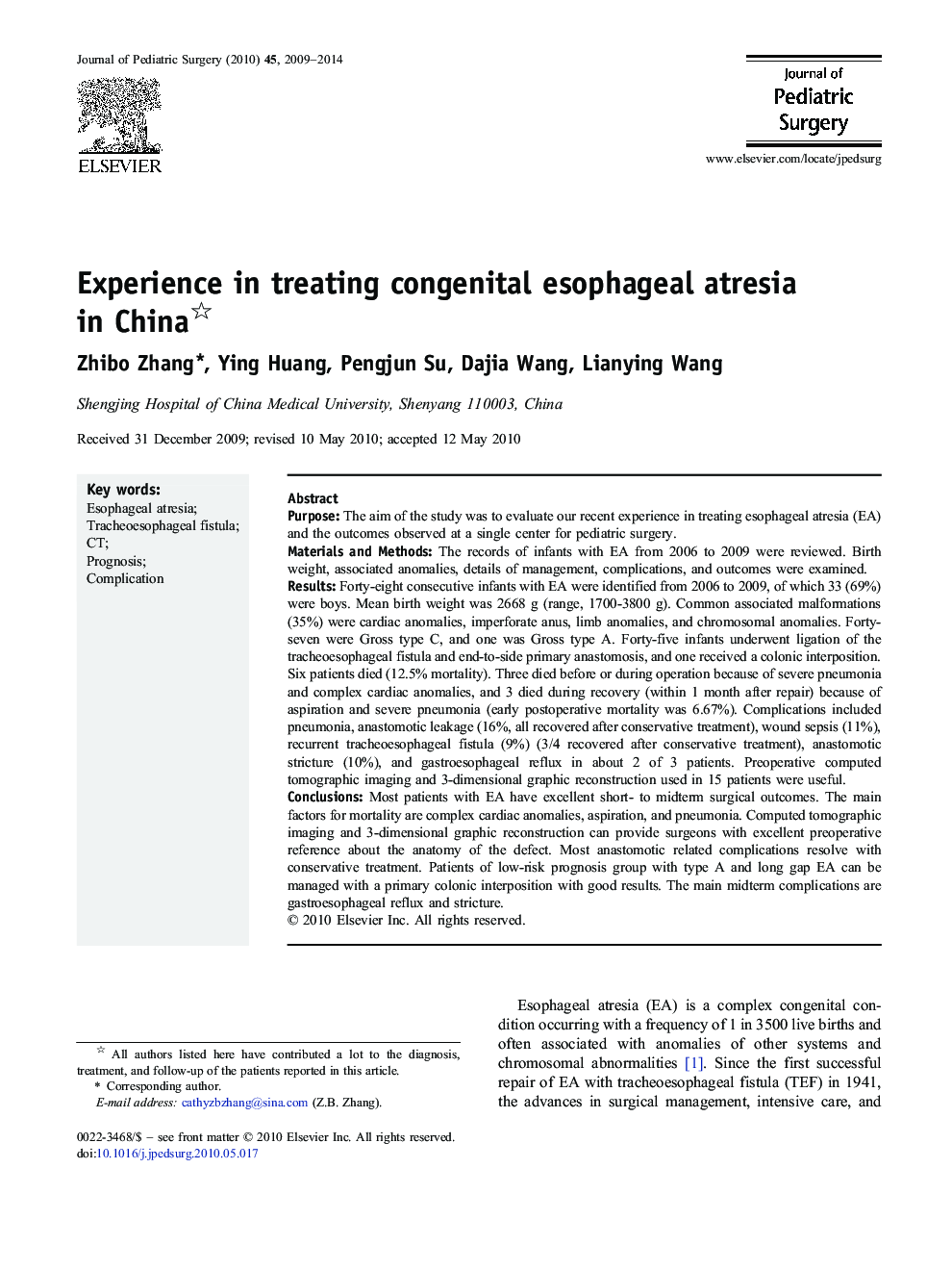| Article ID | Journal | Published Year | Pages | File Type |
|---|---|---|---|---|
| 6218276 | Journal of Pediatric Surgery | 2014 | 6 Pages |
PurposeThe aim of the study was to evaluate our recent experience in treating esophageal atresia (EA) and the outcomes observed at a single center for pediatric surgery.Materials and MethodsThe records of infants with EA from 2006 to 2009 were reviewed. Birth weight, associated anomalies, details of management, complications, and outcomes were examined.ResultsForty-eight consecutive infants with EA were identified from 2006 to 2009, of which 33 (69%) were boys. Mean birth weight was 2668 g (range, 1700-3800 g). Common associated malformations (35%) were cardiac anomalies, imperforate anus, limb anomalies, and chromosomal anomalies. Forty-seven were Gross type C, and one was Gross type A. Forty-five infants underwent ligation of the tracheoesophageal fistula and end-to-side primary anastomosis, and one received a colonic interposition. Six patients died (12.5% mortality). Three died before or during operation because of severe pneumonia and complex cardiac anomalies, and 3 died during recovery (within 1 month after repair) because of aspiration and severe pneumonia (early postoperative mortality was 6.67%). Complications included pneumonia, anastomotic leakage (16%, all recovered after conservative treatment), wound sepsis (11%), recurrent tracheoesophageal fistula (9%) (3/4 recovered after conservative treatment), anastomotic stricture (10%), and gastroesophageal reflux in about 2 of 3 patients. Preoperative computed tomographic imaging and 3-dimensional graphic reconstruction used in 15 patients were useful.ConclusionsMost patients with EA have excellent short- to midterm surgical outcomes. The main factors for mortality are complex cardiac anomalies, aspiration, and pneumonia. Computed tomographic imaging and 3-dimensional graphic reconstruction can provide surgeons with excellent preoperative reference about the anatomy of the defect. Most anastomotic related complications resolve with conservative treatment. Patients of low-risk prognosis group with type A and long gap EA can be managed with a primary colonic interposition with good results. The main midterm complications are gastroesophageal reflux and stricture.
